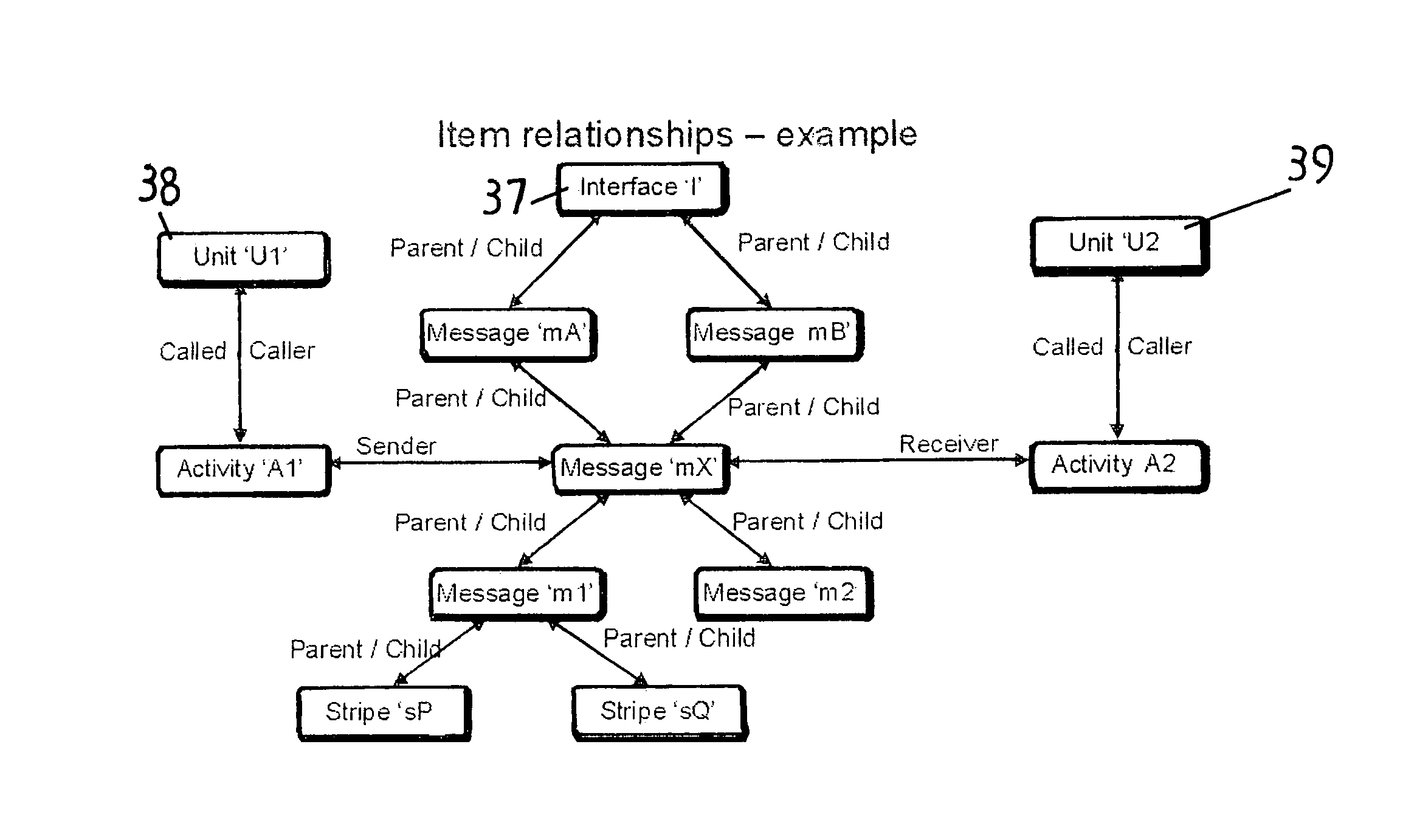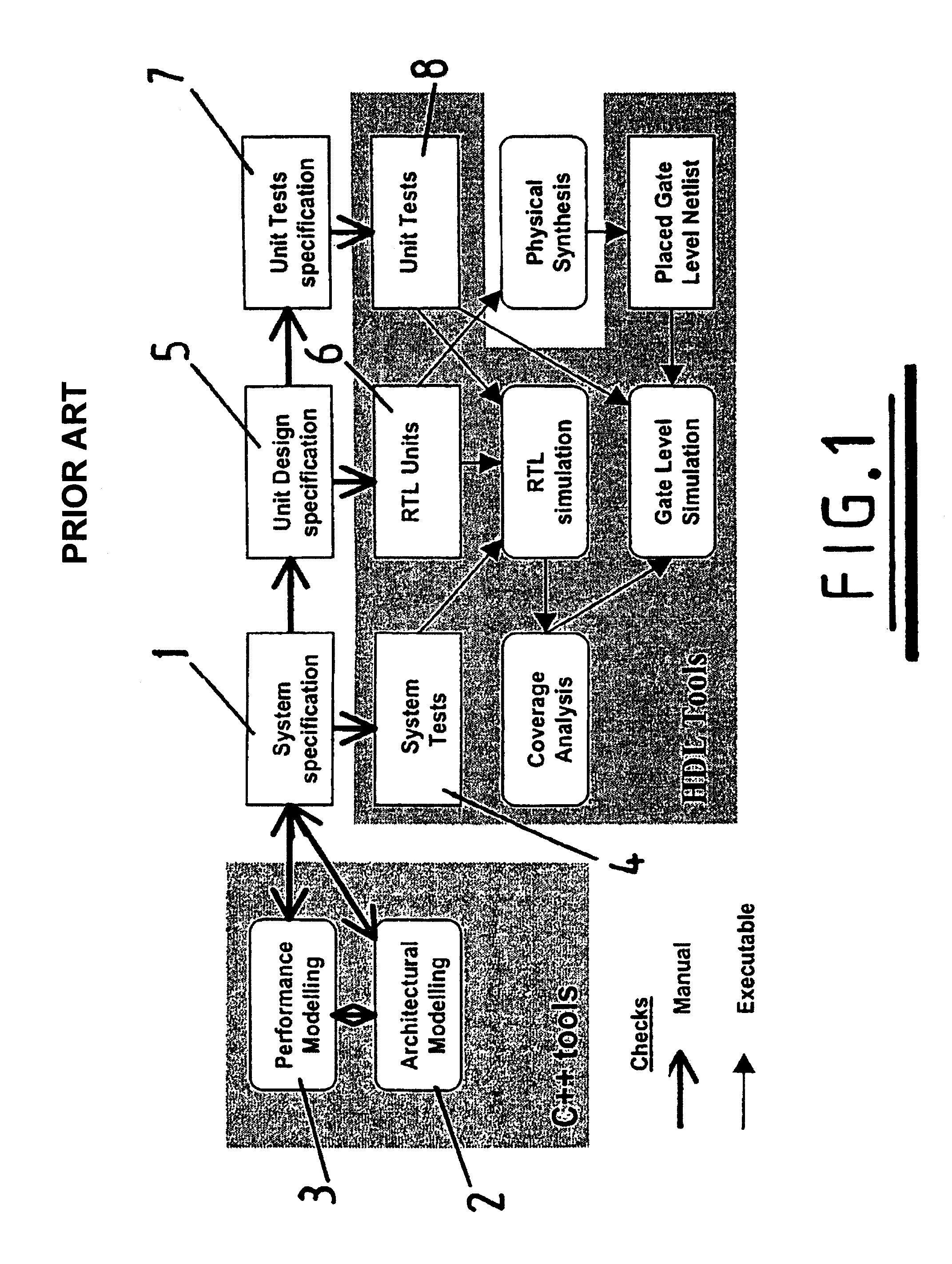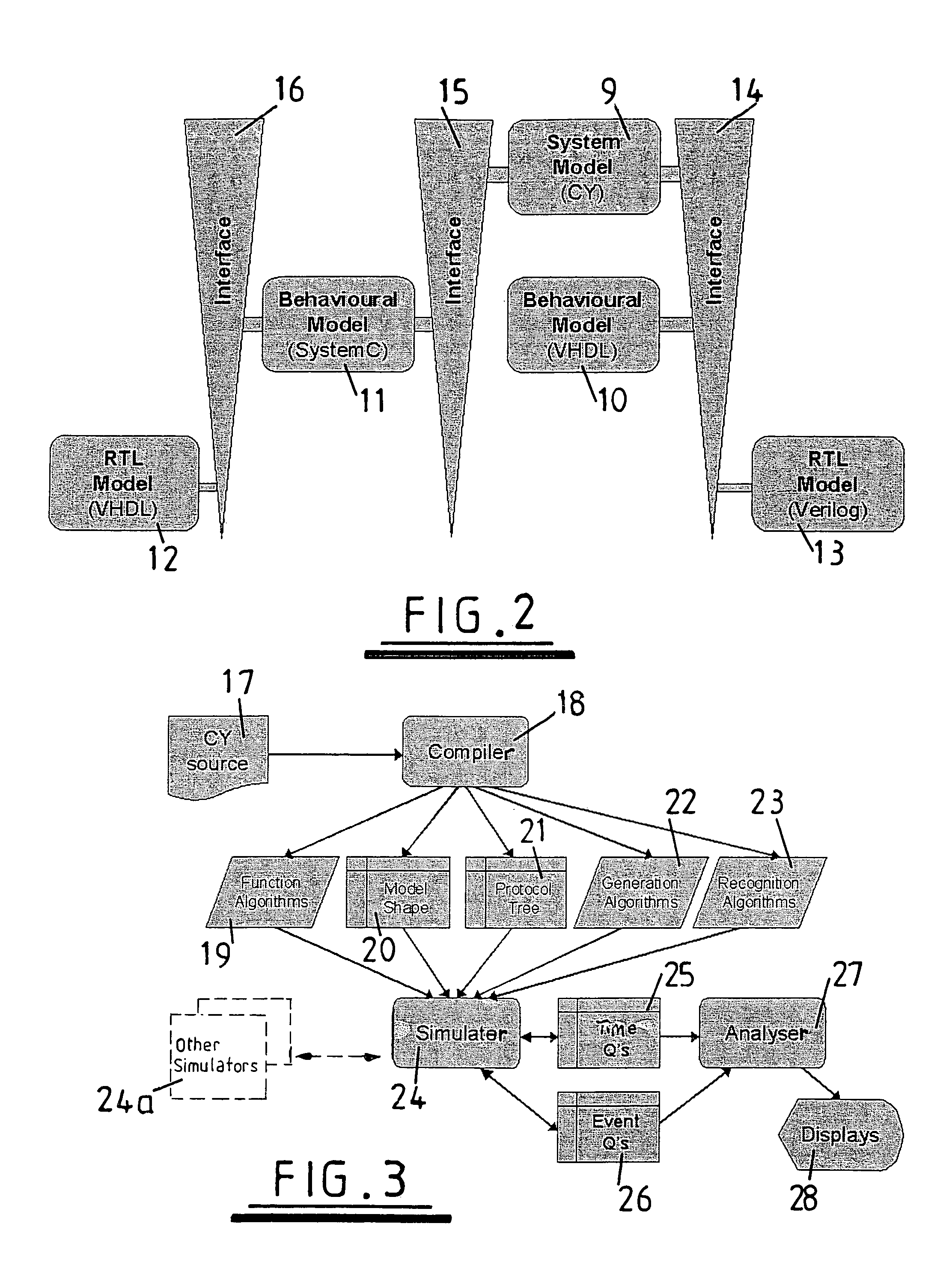Modelling and simulation method
a simulation method and model technology, applied in the field of model and simulation method, can solve the problems of complex system in its entirety testing, high cost, and high cost, and achieve the effect of reducing the cost of rtl
- Summary
- Abstract
- Description
- Claims
- Application Information
AI Technical Summary
Problems solved by technology
Method used
Image
Examples
Embodiment Construction
[0046]Appendix 1 and Appendix 2 show CY source code for illustrative examples of the invention; and
[0047]Appendix 3 shows C++ code created from the CY source code of Appendix 1.
[0048]Referring to FIG. 1, there is illustrated a modelling process known from the prior art. Initially a system specification 1 is created in a natural language such as English. Architectural modelling 2 and performance modelling 3 are carried out using a high level programming language such as C++. During this modelling phase the system specification 1 may be amended in the light of results obtained from the modelling process 2, 3. When the system specification 1 has been finalised system tests 4 are created from the specification 1. Such tests are usually specified at Register Transfer Level (RTL) so that they can be run on the full System Model. A Unit design specification 5 is also created from the system specification 1. This specification details of units which are to make up the system and is again wr...
PUM
 Login to View More
Login to View More Abstract
Description
Claims
Application Information
 Login to View More
Login to View More - R&D
- Intellectual Property
- Life Sciences
- Materials
- Tech Scout
- Unparalleled Data Quality
- Higher Quality Content
- 60% Fewer Hallucinations
Browse by: Latest US Patents, China's latest patents, Technical Efficacy Thesaurus, Application Domain, Technology Topic, Popular Technical Reports.
© 2025 PatSnap. All rights reserved.Legal|Privacy policy|Modern Slavery Act Transparency Statement|Sitemap|About US| Contact US: help@patsnap.com



